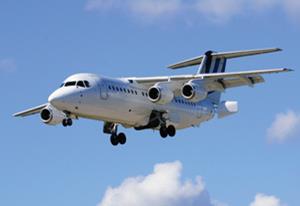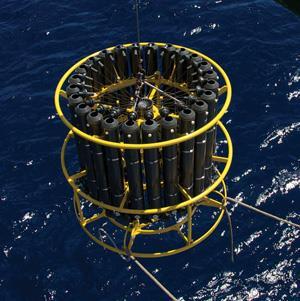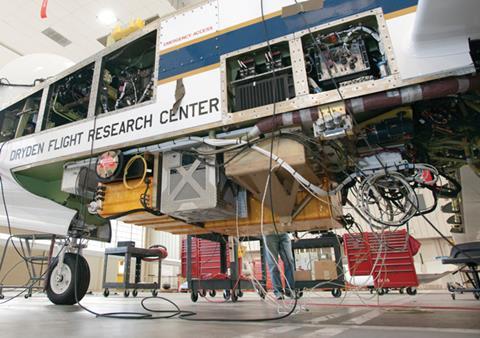Nina Notman meets some of the atmospheric chemists fitting the pieces of the climate change jigsaw together

‘Warming of the climate system is unequivocal. The atmosphere and ocean have warmed, the amounts of snow and ice have diminished, sea level has risen, and the concentrations of greenhouse gases have increased,’ states the latest Intergovernmental Panel on Climate Change (IPCC) report. ‘It is extremely likely that human influence has been the dominant cause of the observed warming since the mid-20th century,’ it adds.
The IPCC publishes regular reports pulling together recent scientific literature on understanding climate change, its impacts and future risks, and options for adaptation and mitigation. The purpose of these assessments is to provide a scientific basis for governments around the world to develop their climate-related policies.
Thousands of published papers are assessed by hundreds of volunteer authors for each of the IPCC reports. The latest - the Fifth Assessment Report - has 831 authors and was published in four parts between September 2013 and November 2014.
These reports are huge because vast numbers of papers are published and data is collected each year on this topic. This is all necessary because the quest to understand climate change - how it has changed up to the present day and how it may change in the future - is phenomenally difficult. The number of contributing factors is enormous and the Earth’s mechanisms for controlling its climate are extremely complicated, and still poorly understood.
Carbon dioxide is the gas that first springs to mind when thinking of the warming of the globe, but other contributing gases include water vapour, methane, nitrous oxide, ozone and halocarbons. All of these are naturally present in the atmosphere, but human behaviour is changing many of their concentrations. Microscopic particles called atmospheric aerosols - both natural, such as dust and sea salt, and manmade, from burning fossil fuels such as sulfates and nitrates - also play an important role. Understanding how these gases and aerosols spread through the atmosphere and how they react over time is crucial to understanding how the Earth’s climate will change in the future.
Modelling the future

Computer simulations are a key tool for fitting all the bits of the climate jigsaw together. They are used extensively by climate scientists all over the world to improve our understanding of the Earth’s natural climate controls and the effect global warming is having on them. Some models also use known gas and aerosol levels in the atmosphere in the past and at the present to predict the future.
It is computer modelling that has allowed the IPCC to make a series of predictions - or projections as they prefer to call them - such as that ‘global mean temperatures will continue to rise over the 21st century if greenhouse gas emissions continue unabated’.
The UK Met Office is one of the institutions whose computer models for predicting future climate change are used in the IPCC reports. Atmospheric chemist John Pyle and his team, at the University of Cambridge and the National Centre for Atmospheric Science, are currently writing some of the chemical reaction schemes to go into the next generation of Met Office models.
‘Carbon dioxide is chemically inactive in the atmosphere,’ explains John. However other atmospheric gases undergo several hundred different reactions in the atmosphere. Methane for example is removed from the atmosphere by reacting with hydroxyl radicals, several other reactions then occur and it eventually ends up as carbon dioxide.
‘We write differential equations that solve this coupled problem of how these gases evolve over time,’ John says. Some of these gases also last long enough to be blown around by global wind systems, and these movements are taken into account by the models too.
Going out into the field

John likes to leave his supercomputer suite at times to get his hands dirty taking real measurements of gas concentrations in the atmosphere, with the end goal of using these measurements to inform future models.
In early July, he participated in a project measuring current methane levels in the Arctic. Studying the Arctic is particularly important because it is the least well catered for part of the world by the current models.
There are large stores of methane in the ocean floor in the Arctic that naturally, slowly release the gas into the atmosphere. This methane is locked up in an ice-like structure called methane hydrate. When the ocean is warmer - at certain times of year - some of the hydrate melts and a proportion of the released methane enters the atmosphere. There are concerns that global warming may speed up the release of this greenhouse gas, which would then cause the atmosphere to warm further.
John was a member of the team taking air measurements on board a research plane. ‘This British Aerospace 146 aircraft is normally used as a 120 seater passenger aircraft, but it has been fully equipped for scientific measurements,’ he explains. The plane is equipped with specialised inlets on the wings, which suck air out of the atmosphere and into the specialised analytical equipment on board for in situ measurement.
Quizzing the clouds
Earlier this year John - and the plane - took part in a tropical storm chasing field trip in Guam (a tiny island in the western Pacific Ocean). Over these warm tropical waters vast cumulonimbus clouds can form. These act like chimneys, uplifting gases and aerosols from the ocean’s surface up through the troposphere and into the stratosphere, explains Lucy Carpenter from the University of York who also took part in this project. Once there these gases and aerosols slowly drift around the world until they are broken down, and therefore these storms play a significant role in the global climate system.
Three aircraft were involved in this project - all analysing the air composition at different heights. The UK research plane flew below around 9 km above sea level, a US plane flew at the lower edge of the stratosphere (around 15 km high) and then a US unmanned Global Hawk flew higher still.
Many different gases and aerosols were investigated, but Lucy was focused on measuring short-lived gaseous halocarbons. These molecules interact with, and destroy, ozone, she explains. In the troposphere this is a good thing, as ozone here is a greenhouse gas and therefore its removal should have a cooling effect. But if these halocarbons travel up higher and reach the stratosphere, they can contribute to the undesirable destruction of the ozone layer, an important natural shield that protects the Earth from most of the sun’s ultraviolet radiation.
These halogen-containing molecules are naturally emitted by the sea, but are normally rapidly destroyed by photooxidation in the air within a few weeks, meaning they never reach the stratosphere. However, these clouds allow the molecules to quickly travel much higher up than normal.
In her quest to better understand the impact of naturally produced gasses on climate, Lucy spent summer 2013 in the Arctic, this time on board an ice breaking ship. Again the project was looking at gases and aerosols emitted by the sea into the atmosphere, but here the team wanted to see how these affect the reflective ability of clouds.
Clouds generally have a cooling effect on the Earth as they reflect sunlight away before it hits the surface. In the Arctic, this effect occurs only in summer, when there are no bright ice sheets to reflect light. We don’t yet known how rapid changes in Arctic climate will affect the atmospheric aerosols on which clouds form.
As the ship zigzagged its way through the Arctic, coming in and out of the sea ice, it was constantly pumping in fresh seawater, which was analysed by Lucy’s team. Once a day, a device called a rosette sampler was lowered into the ocean to collect water samples and take measurements at different depths. Air samples were also collected on board the ship and using aircraft.
The team’s hypothesis is that the ice acts as a lid, keeping all these gases and aerosols in the ocean, and as the ice retreats (due to global warming) the lid comes off and they can escape, explains Lucy.
‘The idea is that some of these gases can then be liberated much more easily into the atmosphere, and they can contribute to climate cooling because they can make cloud condensation nuclei and that leads to brighter clouds, which can have a cooling effect at certain times of year,’ she says. This may act to offset a tiny amount of the warming being caused by the loss of the ice and its reflective abilities.
Remote monitoring

Lucy is also involved in the long term atmospheric monitoring station in Cape Verde in the central Atlantic Ocean. Since 2006, continuous measurements of atmospheric gases and aerosols have been taken here. ‘We are measuring long-term changes and trends in the background atmosphere,’ explains Lucy. ‘If you were measuring in a city, your measurements would be totally dominated by the emissions of that city, whereas if you measure in a remote location like that, you can see how basic atmospheric composition is changing on a hemispheric level.’
The Cape Verde Atmospheric Observatory is one of 29 global atmospheric watch stations audited by the World Meteorological Organization. The WMO also has a network of more than 400 regional stations that constantly collect data. It is these long-term data sets that Piers Forster from the University of Leeds is trying to extract useful information from with the help of computer models.
‘I try to understand how all these different observations relate to each other and I do that by building models,’ explains Piers. It isn’t just the real observations that feed into Piers’ (and others) computer stimulations, but also the results of laboratory experiments exploring the properties and reactivity of gases and aerosols in the atmosphere.
One puzzle Piers is currently working on is trying to understand historical surface temperature rises. ‘If you look at the last 15 years’ records of surface temperature, the average temperature of the whole Earth does not seem to have been increasing quite as rapidly as we think it should do,’ he says. ‘We typically expect it to increase around about 0.1-0.2°C per decade, but for the last 15 years the temperature change has been flat. This is peculiar because over this same period we have seen an increase in carbon dioxide.’
This is something that climate change sceptics are picking on as evidence that global warming is not occurring. Piers, however, believes it is just evidence that we shouldn’t be looking at temperature changes over such a short timescale. ‘What our models are telling us is that the excess heat has been going into the deepest part of the ocean and the chances are that that excess heat will eventually come back up and increase the surface temperature,’ he explains. ‘So perhaps we can expect a future period of accelerated increase in the surface temperature.’

Local concerns
Another hot research topic is how and why different parts of the world are being affected differently by global warming. The temperature change has not been uniform across the world.
Regional effects of emissions of these gases and aerosols are still very poorly understood, explains David Stevenson from the University of Edinburgh. ‘We think models can do a reasonable job of simulating a global temperature change but understanding regional changes is much more difficult,’ he says. Both the lifetime of the gases and aerosols, and where they are being emitted from, needs to be considered when modelling regional temperature change.
Carbon dioxide, because it doesn’t react with anything in the atmosphere, is never broken down, meaning regardless of where it is emitted it will mix into the atmosphere and have an even effect everywhere. Methane has a lifetime of around 10 years, so will mix well too, but ozone and aerosols have much shorter lifetimes. ‘Ozone has a lifetime in the atmosphere of around 2-3 weeks,’ says David. ‘That means regional levels are much more strongly affected by local emissions.’ Aerosols typically have a lifetime of less than a week, meaning they are even more regionally concentrated.
Alongside helping to understand the Earth’s climate systems and predicting the future, both globally and regionally, models are also being used to produce a league table of how important the impact of the individual gases and aerosols are. ‘This is of direct relevance for policymakers so they can actually see which gases we think are driving climate change,’ David says.
Encouraging policymakers to take steps to limit emissions of the greenhouse gases and aerosols that are driving climate change is the purpose of all this research, because climate legislation doesn’t really exist yet. All current air quality laws are concerned with immediate impacts on human health rather than the future human catastrophes that will be caused by global warming.
Nina Notman is a science writer based in Salisbury, UK









No comments yet